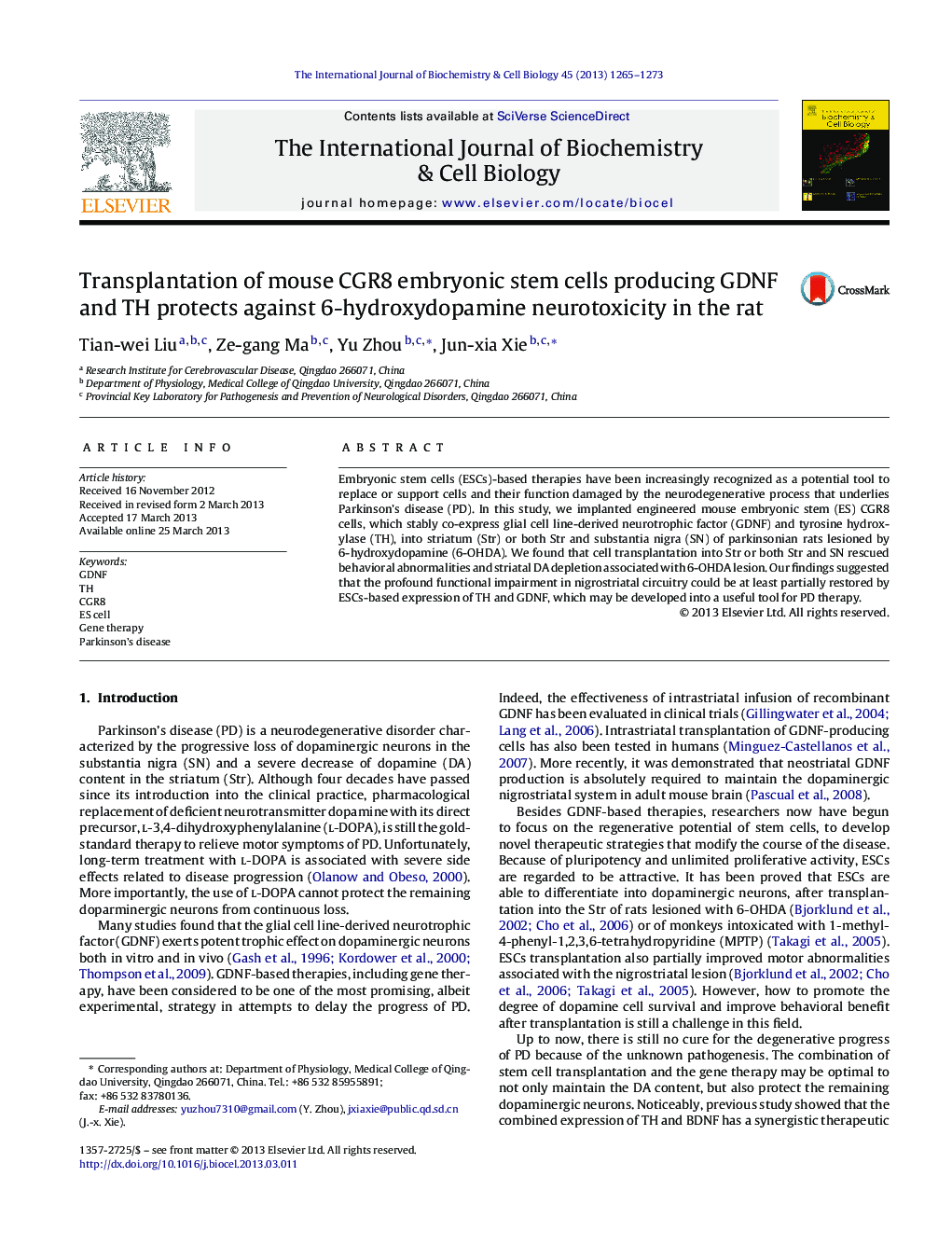| Article ID | Journal | Published Year | Pages | File Type |
|---|---|---|---|---|
| 1983673 | The International Journal of Biochemistry & Cell Biology | 2013 | 9 Pages |
Abstract
Embryonic stem cells (ESCs)-based therapies have been increasingly recognized as a potential tool to replace or support cells and their function damaged by the neurodegenerative process that underlies Parkinson's disease (PD). In this study, we implanted engineered mouse embryonic stem (ES) CGR8 cells, which stably co-express glial cell line-derived neurotrophic factor (GDNF) and tyrosine hydroxylase (TH), into striatum (Str) or both Str and substantia nigra (SN) of parkinsonian rats lesioned by 6-hydroxydopamine (6-OHDA). We found that cell transplantation into Str or both Str and SN rescued behavioral abnormalities and striatal DA depletion associated with 6-OHDA lesion. Our findings suggested that the profound functional impairment in nigrostriatal circuitry could be at least partially restored by ESCs-based expression of TH and GDNF, which may be developed into a useful tool for PD therapy.
Related Topics
Life Sciences
Biochemistry, Genetics and Molecular Biology
Biochemistry
Authors
Tian-wei Liu, Ze-gang Ma, Yu Zhou, Jun-xia Xie,
